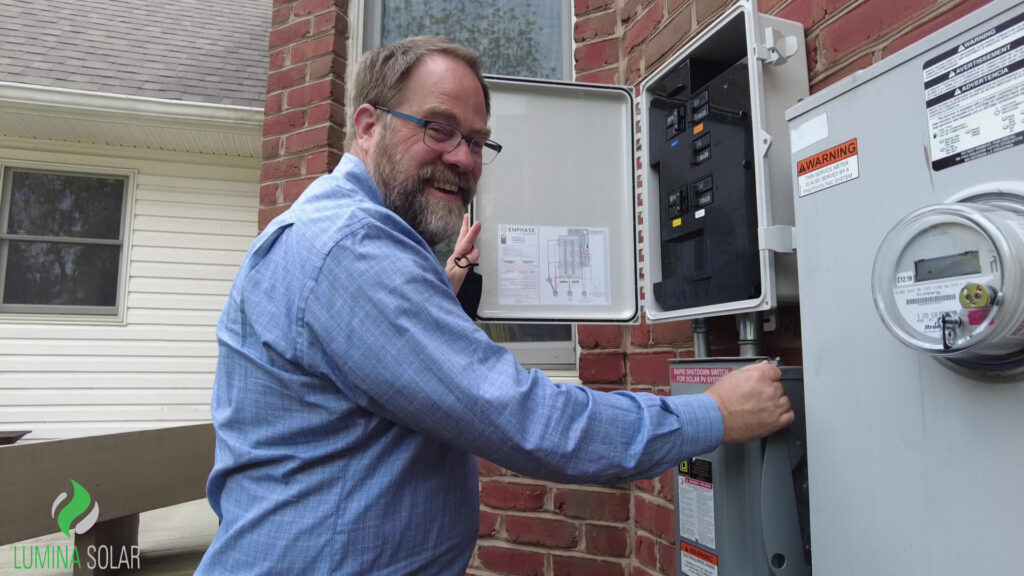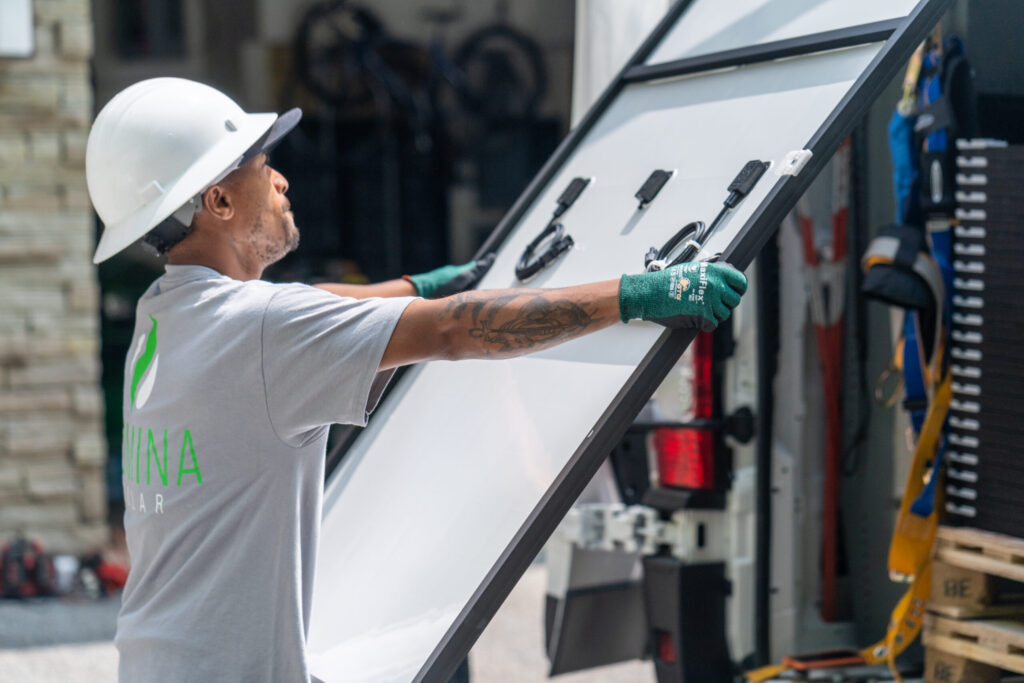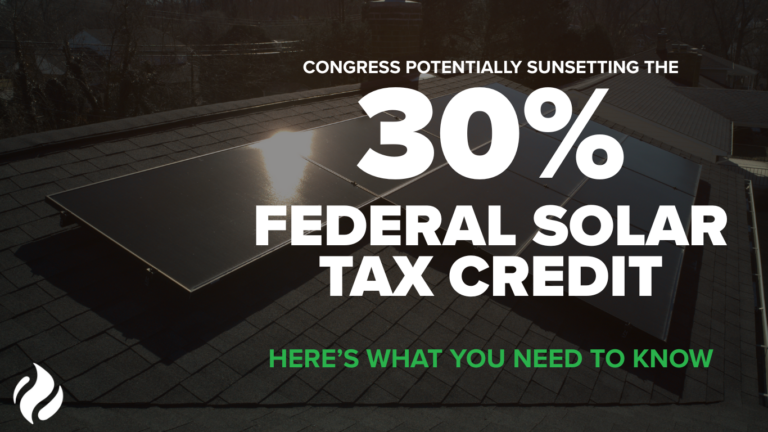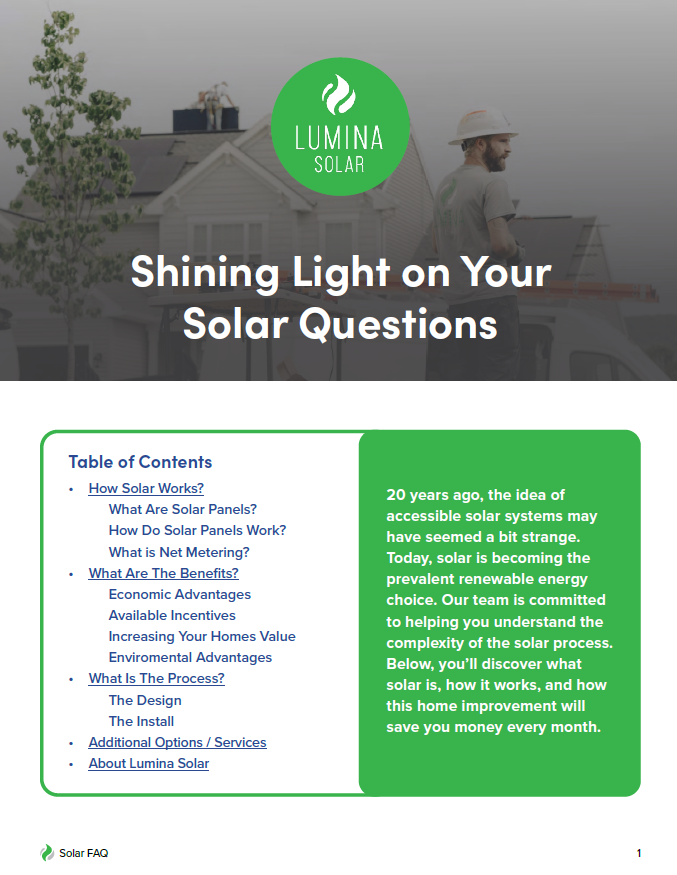Switching to solar energy is a transformative decision that can significantly reduce your electricity costs as well as your carbon footprint. Whether you’re a homeowner or a business operator, transitioning to solar power can be straightforward and rewarding, thanks to advancements in technology and supportive policies. Here’s your comprehensive step-by-step guide to making the switch* to solar energy, brought to you by Lumina.
Step 1: Understanding Solar Power
Before diving into the world of renewable energy, it’s crucial to understand how solar works and what benefits it offers. Solar panels convert sunlight into electricity, which can be used to power your home or business. The key advantages include lower electricity bills, reduced environmental impact, and increased property value. Articles such as this one from credible solar resources are really helpful for understanding the ins and outs of solar.
Step 2: Assessing Your Solar Potential
The first practical step towards going solar is assessing your property’s solar potential. This involves understanding the orientation of your property, the amount of sunlight it receives, and any possible obstructions such as trees or neighboring buildings. A reliable solar company, distinguished by experienced solar consultants, will demonstrate their skill in simply explaining how solar can benefit your specific circumstances. To assess your solar potential, book your discovery call with our experts today.
Step 3: Receiving Quotes & Finding the Right Provider
Choosing a reputable and experienced solar provider is crucial. Look for companies with strong track records, positive customer reviews, and relevant certifications. Lumina, a top-rated provider in the mid-Atlantic region, offers personalized solar solutions tailored to meet your specific energy needs and goals. We encourage homeowners to receive multiple quotes to compare; we are confident you will experience firsthand the exceptional quality and value that sets Lumina apart from other companies.
Step 4: Understanding Financing Options
Solar installations can be a significant investment, but numerous financing options make renewable energy accessible to many. These options include solar leases, power purchase agreements (PPAs), loans, and outright purchases. A knowledgeable solar company should help explain each option’s benefits and help determine the best choice based on your financial situation.
Step 5: Leveraging Incentives
To further reduce the cost of going solar, explore available incentives and rebates. Federal, state, and local governments often offer tax credits, rebates, and other incentives for solar purchases to encourage green energy adoption. The Lumina team has dedicated members for helping you understand and apply for incentives and SRECs if applicable.
Step 6: System Design and Approval
After finalizing the financial details, your solar provider will finalize the system design tailored to your property’s specifications. This design must then be approved by local building authorities. Lumina will handle all necessary permits and documentation, including any approvals needed by your HOA.
Step 7: Installation
The installation process is arguably the most exciting part. Professional installers will fit your home or business with solar panels, inverters, and all necessary equipment. Installation usually takes up to a few days, depending on the system’s size. Lumina is unique in the industry as we have installers, electricians, roofers, and maintenance technicians in house and we don’t use 3rd Party contracting. This means we can control the quality standard, providing the safest and cleanest installation for our customers.
Step 8: Inspection and Connection
After installation, the system will be inspected by local officials to ensure compliance with electrical and building codes. Once approved, your system will be connected to the power grid. At this point, you can start generating your own clean, renewable energy!

Step 9: Maintenance and Monitoring
Most modern systems require minimal maintenance, mainly ensuring that panels remain clean and free from obstructions. Many systems come equipped with monitoring software that allows you to track your system’s performance and energy production in real-time. In the rare event that you troubleshooting and servicing, Lumina offers solar maintenance for any issue you may have with your system.
Conclusion
Going solar is not just an investment in your home or business—it’s an investment in your financial future as well as the future of our energy resources. With the right guidance and expertise from providers like Lumina, the transition to renewable energy can be seamless, empowering you to generate clean, sustainable energy for decades to come. Ready to make the switch? Contact Lumina today to begin your journey to a brighter, greener future.
*MAKING THE SWITCH
By stating “Make the switch to solar,” Lumina does not imply or represent that you will achieve complete energy independence or that your solar system will immediately replace your existing electricity provider once installed. While solar energy can significantly reduce your reliance on traditional power sources, it may not entirely eliminate your dependence on the grid. Factors such as system size, location, energy consumption, grid capacity, power outages, and local regulations affect the extent of your energy independence. We encourage customers to consult with our experts to understand how solar energy can benefit their specific situation and to continue working with their electricity provider as needed.



